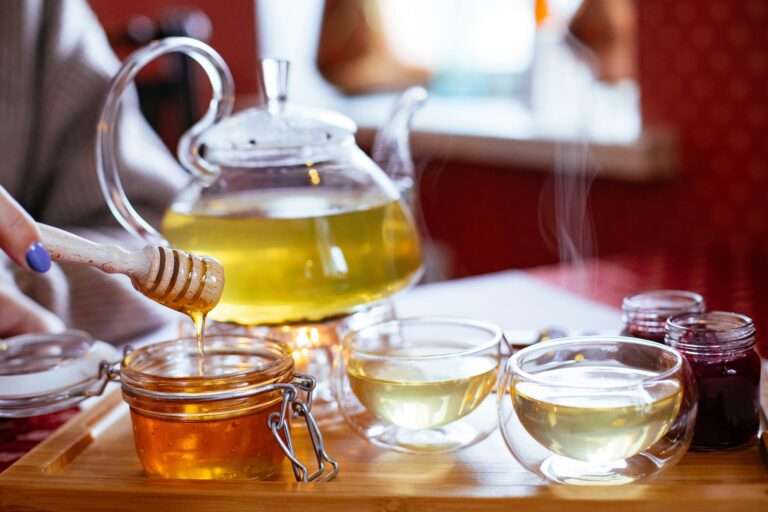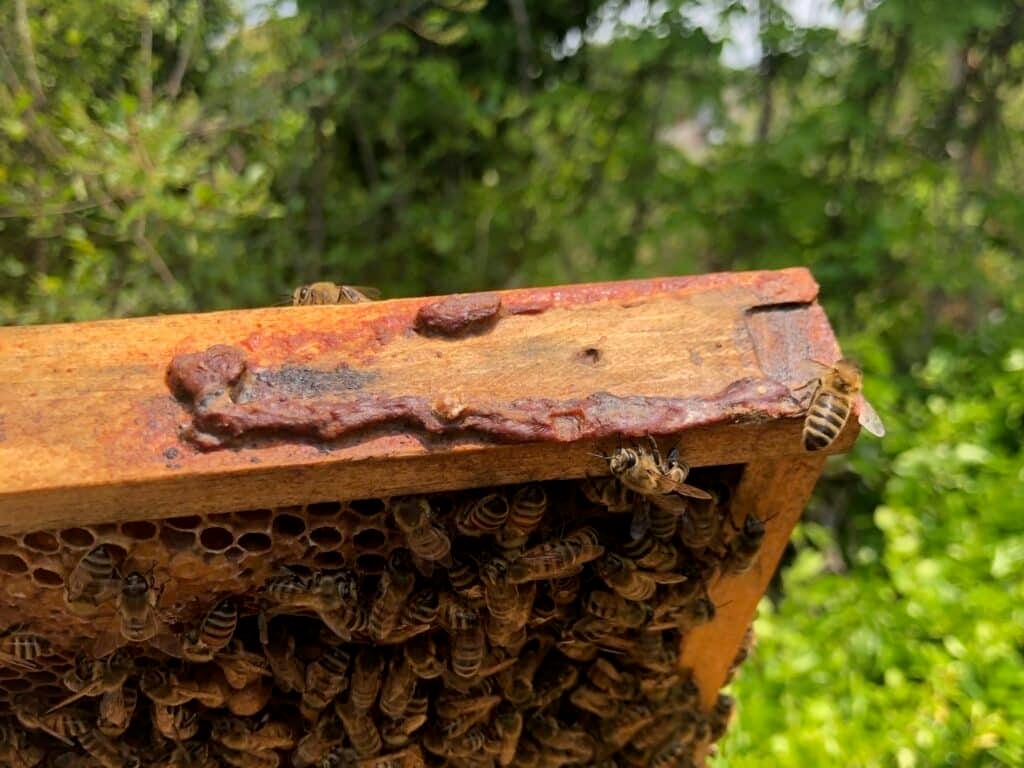Learn about Quality Classifications & Honey Grades
Honey grading systems provide standardized methods for assessing honey quality, ensuring consumers receive products that meet specific standards for purity, taste, and safety. Several grading systems exist worldwide, with the most prominent being the USDA (United States Department of Agriculture) system and international standards established by Codex Alimentarius.
USDA Honey Grading System
The USDA established three primary grades for extracted honey based on quality factors and analytical criteria[1][2][3]. These grades help producers, packers, and consumers understand the quality characteristics of different honey products.
Grade Classifications
Grade A Honey represents the highest quality extracted honey, meeting stringent standards with a minimum total score of 90 points[1][4][2]. Grade A honey must be “practically free” of defects and exhibit excellent flavor and clarity[1][4]. This premium grade requires moisture content below 18.6%[5][6] and offers the best overall sensory experience.
Grade B Honey constitutes the second-tier quality, requiring a minimum total score of 80 points[1][2]. This grade is “reasonably free” of defects while maintaining fairly good flavor and clarity characteristics[1][7]. Grade B honey also maintains the same moisture content requirement of below 18.6%[1][6].
Grade C Honey represents the lowest standard grade with a minimum total score of 70 points[1][2]. While “fairly free” of defects, this grade may exhibit more noticeable imperfections in texture, color, or flavor compared to higher grades[4][7]. Grade C honey allows for higher moisture content up to 20%[1][6].
Substandard Honey fails to meet the requirements for Grade C but remains safe for human consumption[8][2]. This classification applies to honey that doesn’t achieve the minimum quality thresholds but still meets basic food safety standards.
Quality Assessment Factors
The USDA grading system evaluates honey using several key criteria, each assigned specific point values totaling 100 points[3][9][6]:
Flavor and Aroma (50 points) represents the most heavily weighted factor, assessing whether the honey exhibits good, normal flavor and aroma characteristic of its predominant floral source[3][9]. The honey must be free from caramelized flavor or objectionable tastes caused by fermentation, smoke, chemicals, or other contaminants[3].
Absence of Defects (40 points) evaluates the degree of freedom from particles of comb, propolis, or other foreign matter that may be suspended or deposited in the honey[3][9]. Classifications range from “practically free” to “fairly free” of defects[3].
Clarity (10 points) applies only to filtered honey styles and measures the apparent transparency or clearness to the eye, including freedom from air bubbles, pollen grains, or other fine particles[3][9]. This factor doesn’t apply to strained honey styles[3].
Moisture Content Standards
Moisture content serves as a critical quality indicator, with optimal levels typically ranging between 14% and 18% for premium honey[10][5]. The USDA requires moisture content below 18.6% for both Grade A and Grade B honey, while Grade C allows up to 20% moisture content[1][10][5]. Higher moisture levels increase fermentation risk, as honey with water content exceeding 19% becomes vulnerable to yeast activation[10].
Color Classification System
The USDA classifies honey into seven distinct color categories based on the Pfund scale, a standardized measurement system used throughout the honey industry[11][12][13][14]:
- Water White (0-8mm on Pfund scale)
- Extra White (9-17mm)
- White (18-34mm)
- Extra Light Amber (35-50mm)
- Light Amber (51-85mm)
- Amber (86-114mm)
- Dark Amber (>114mm)
The Pfund color grader provides continuous readings across the entire honey color spectrum by visually comparing honey samples to a standard amber-colored glass wedge[14][15]. Color intensity is expressed as distance in millimeters along the amber wedge, typically ranging from 1 to 140mm[14].
While color doesn’t factor into quality grades, it significantly influences market value and consumer preferences[13][14]. Generally, lighter honeys exhibit milder flavors while darker varieties possess more robust, complex taste profiles[13][16]. Interestingly, darker honeys often contain higher levels of antioxidants, providing greater health benefits despite consumer preference for lighter varieties[13].
International Standards
Codex Alimentarius Standard
The Codex Alimentarius Commission established international honey standards that serve as the foundation for many national regulations worldwide[17][18][19]. The Codex standard, adopted in 1981 and revised in 1987 and 2001, provides voluntary guidelines for honey composition, quality, and labeling[18][19].
The Codex defines honey as “the natural sweet substance produced by honeybees from the nectar of plants or from secretions of living parts of plants or excretions of plant-sucking insects”[20][21]. This definition emphasizes that genuine honey should contain only honey, with no additives and no original components removed except as unavoidable during foreign matter removal[20].
Key Codex requirements include moisture content not exceeding 20% (with exceptions for heather honey at 23%), specific sugar content minimums, and limits on hydroxymethylfurfural (HMF) content as a freshness indicator[22][17][18].
European Union Standards
The European Honey Directive (2001/110/EC) establishes comprehensive quality and labeling requirements for honey marketed within EU member states[23][24]. Recently revised and effective from June 2024, the directive introduces mandatory origin labeling for honey, requiring country-of-origin information in descending order with percentage shares for honey blends[23].
The EU directive closely follows Codex standards but includes more stringent requirements in some areas, particularly regarding freshness indicators like HMF content and diastase activity[17][18]. European standards also specify that honey must be produced by Apis mellifera bees, while Codex allows for honey from all honeybee species[18][16].
Specialized Grading Systems
Manuka Honey Grading
Manuka honey from New Zealand utilizes specialized grading systems that measure unique bioactive compounds[25]. The UMF (Unique Manuka Factor) system evaluates four key measurements: MGO content for strength, Leptosperin for authenticity, DHA for shelf life, and HMF for freshness[25].
MGO (Methylglyoxal) grading indicates potency levels, ranging from entry-level culinary use (50+ MGO) to advanced therapeutic support (1000+ MGO)[25]. Higher MGO values correlate with greater antibacterial strength and enhanced wellness support properties[25].
Processing Styles and Types
Honey processing methods significantly influence final product characteristics and grading considerations:
Filtered Honey undergoes processing to remove almost all fine particles, pollen grains, air bubbles, and suspended materials, resulting in clear, transparent appearance[1][3]. This style must meet clarity requirements as part of quality assessment.
Strained Honey receives less intensive processing, removing most particles like comb fragments and propolis while retaining pollen grains and fine particles[1][3]. Clarity factors don’t apply to strained honey grading.
Liquid Honey remains free from visible crystals, while Crystallized Honey appears solidly granulated[3][16]. Partially Crystallized Honey contains a mixture of liquid and crystallized portions[3].
Quality Factors Beyond Grading
Storage and Freshness Indicators
Hydroxymethylfurfural (HMF) content serves as a critical indicator of honey freshness and heat exposure[17][18]. Fresh honey contains virtually no HMF, but levels increase during storage, particularly at elevated temperatures[17]. The USDA allows maximum HMF levels of 40 mg/kg, while some European quality programs specify limits as low as 15 mg/kg[17][18].
Diastase activity measures enzyme levels that naturally decrease over time and with heat exposure[17][18]. Minimum requirements typically specify 8 Schade units, with exceptions for honey types naturally low in enzymes requiring only 3 units when HMF remains below 15 mg/kg[18].
Defects and Contamination
Common honey defects include visible particles of beeswax, propolis, comb fragments, air bubbles, and foreign organic or inorganic matter[3][9]. The absence of such defects significantly impacts grade classification, with higher grades requiring honey to be “practically free” from any defects affecting appearance or edibility[3].
Proper honey should exhibit no signs of fermentation, unusual odors from smoke or chemicals, or off-flavors that detract from the natural floral characteristics[3][24]. Fermentation indicators include visible bubbles, sour or alcoholic odors, and unusual texture changes[10].
Understanding honey grades empowers consumers to make informed purchasing decisions while helping producers maintain quality standards throughout the supply chain. Whether choosing everyday sweetener or seeking premium artisanal varieties, knowledge of grading systems ensures expectations align with product quality and value.
⁂
- https://www.happymanuka.com/pages/manuka-honey-grading-systems
- https://www.ams.usda.gov/grades-standards/extracted-honey-grades-and-standards
- https://www.ams.usda.gov/sites/default/files/media/Extracted_Honey_Standard[1].pdf
- https://thebfarm.com/blogs/news/what-are-the-rules-and-regulations-for-honey-products
- https://carolinahoneybees.com/water-in-honey/
- https://www.culinarymusings.com/2008/10/the-key-relevance-factors-for-grading-honey/
- https://gypsyshoalsfarm.com/blogs/the-bees/honey-unveiled-a-foodie-guide-to-the-usda-honey-grading-system
- https://www.nettiesbees.com/post/understanding-honey-grades-quality-classifications
- http://agrilife.org/masterbeekeeper/files/2015/04/Honey-Judging-and-Standards.pdf
- https://www.nettiesbees.com/post/moisture-in-honey-the-critical-role-of-water-content
- https://glorybee.com/honey-grades-types
- https://www.honeysource.com/honey-varieties-grades/
- https://www.honeybeesuite.com/the-color-of-honey/
- https://legacy.bjcp.org/mead/color.pdf
- https://abfnet.org/wp-content/uploads/2023/05/Honey_Gradient_EMW_2017.pdf
- https://www.killerbeeshoney.com/blogs/musings/honey-quality-defined-by-government-agencies
- http://www.terezinka.cz/vcely/Med/HonigkontrIntern_e.pdf
- https://www.ihc-platform.net/legislationofhoneycriteriaandstandards.pdf
- https://resources.beesfordevelopment.org/rc/legislation-about-honey/
- https://www.analytica.co.nz/media/vdbeghx5/adultarating-honey.pdf
- https://www.fao.org/4/w0076e/w0076e30.htm
- https://www.fao.org/input/download/standards/310/cxs_012e.pdf
- https://agriculture.ec.europa.eu/farming/animal-products/honey_en
- https://www.cbi.eu/market-information/honey/what-requirements-should-your-product-comply
- https://manukora.com/blogs/honey-guide/what-do-the-different-mgo-grades-mean



